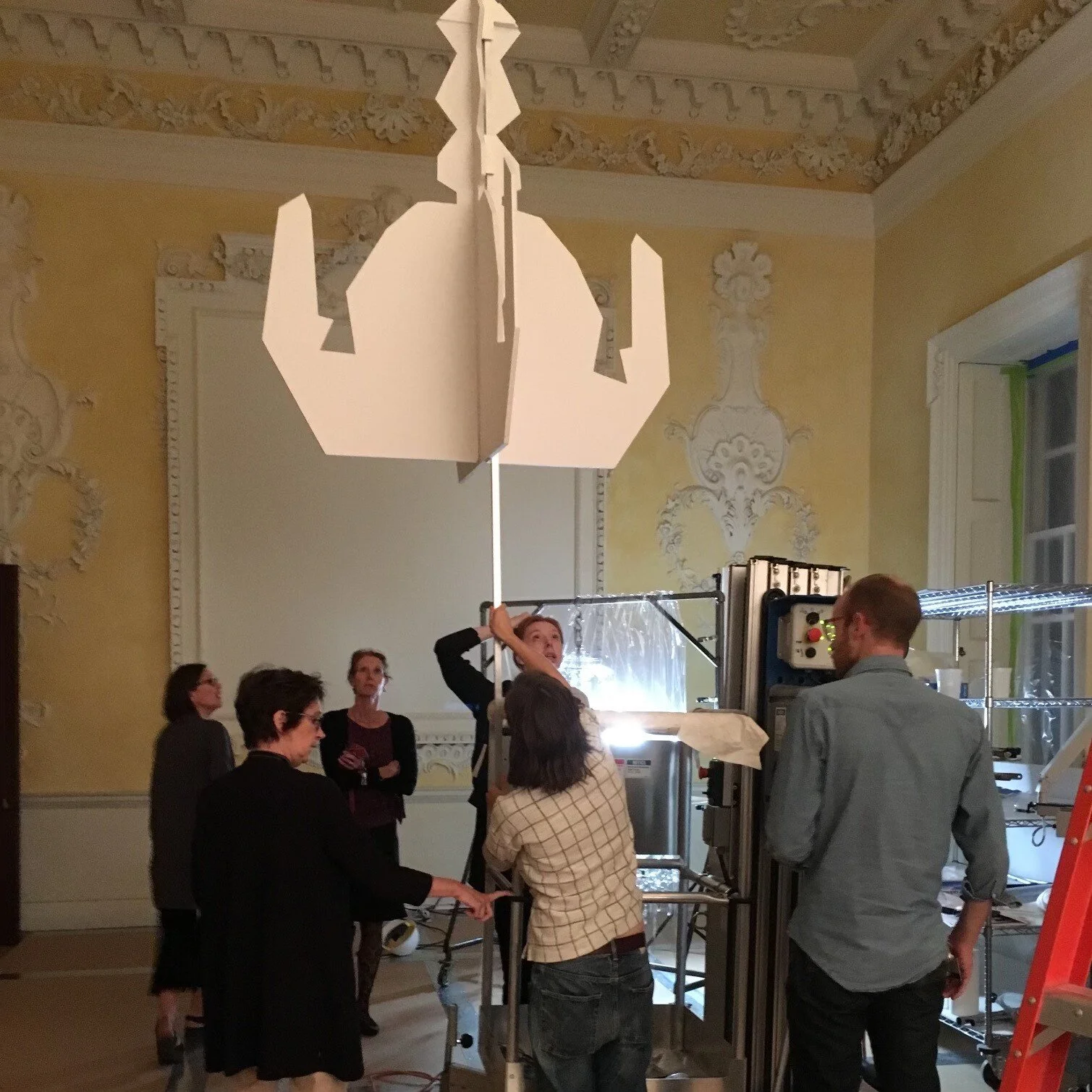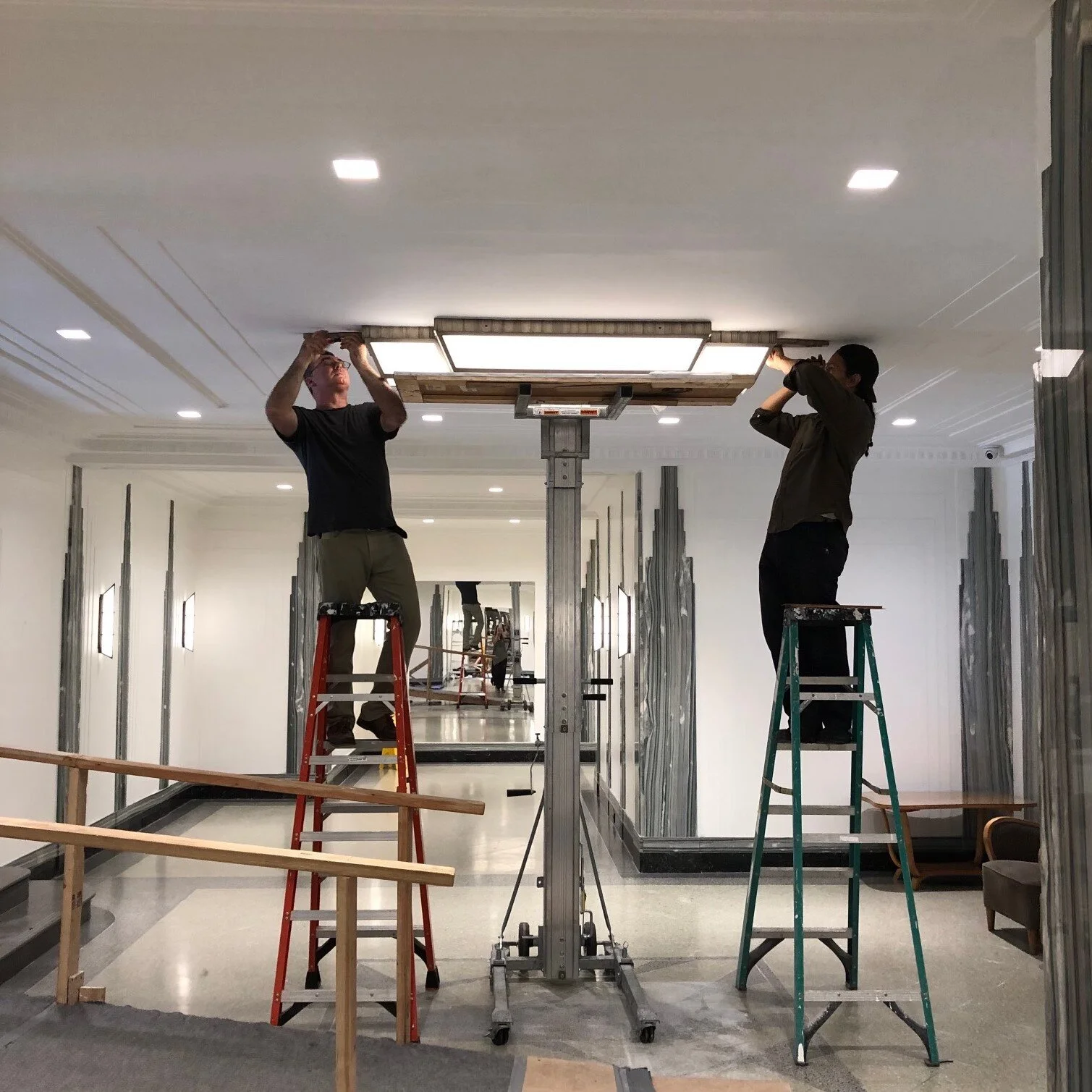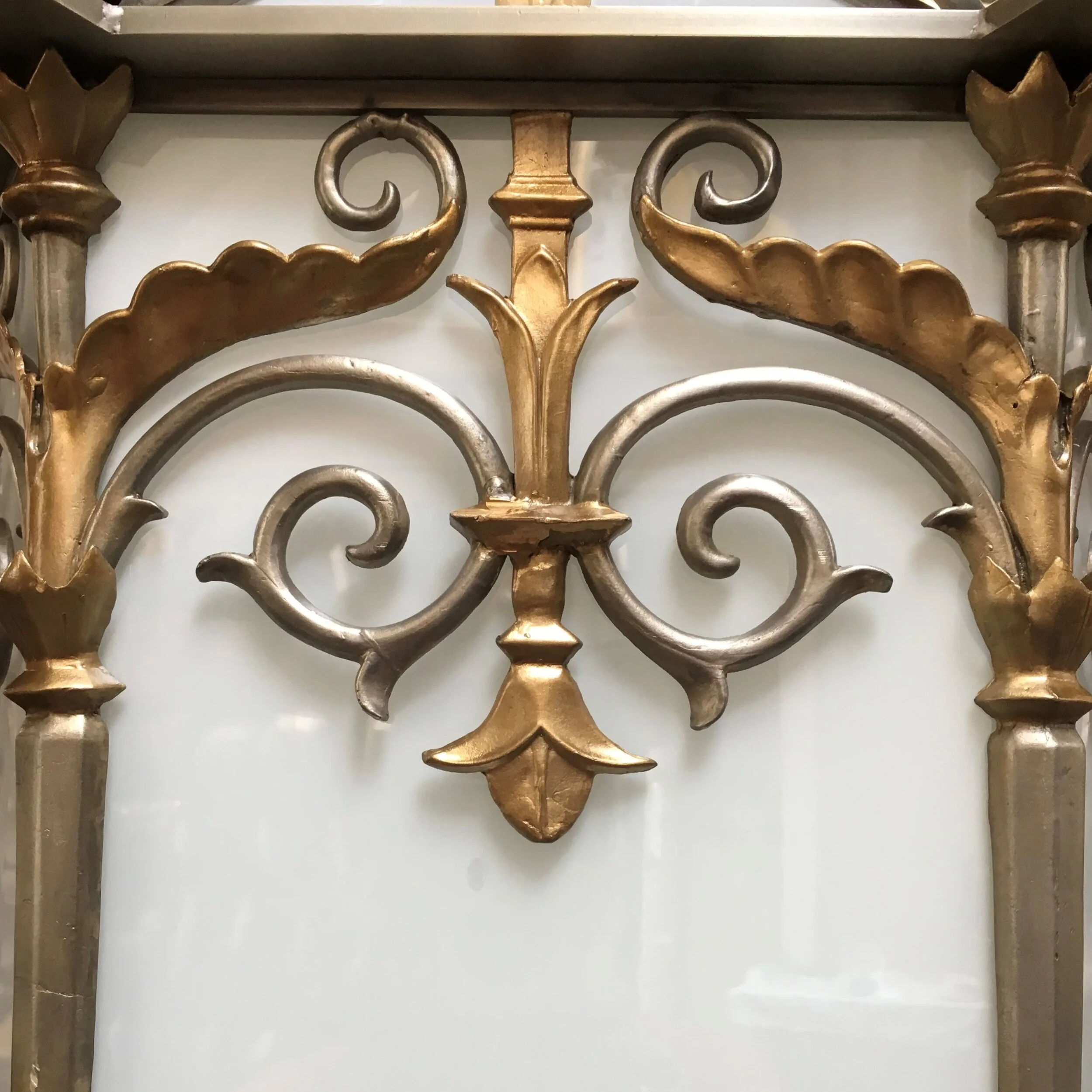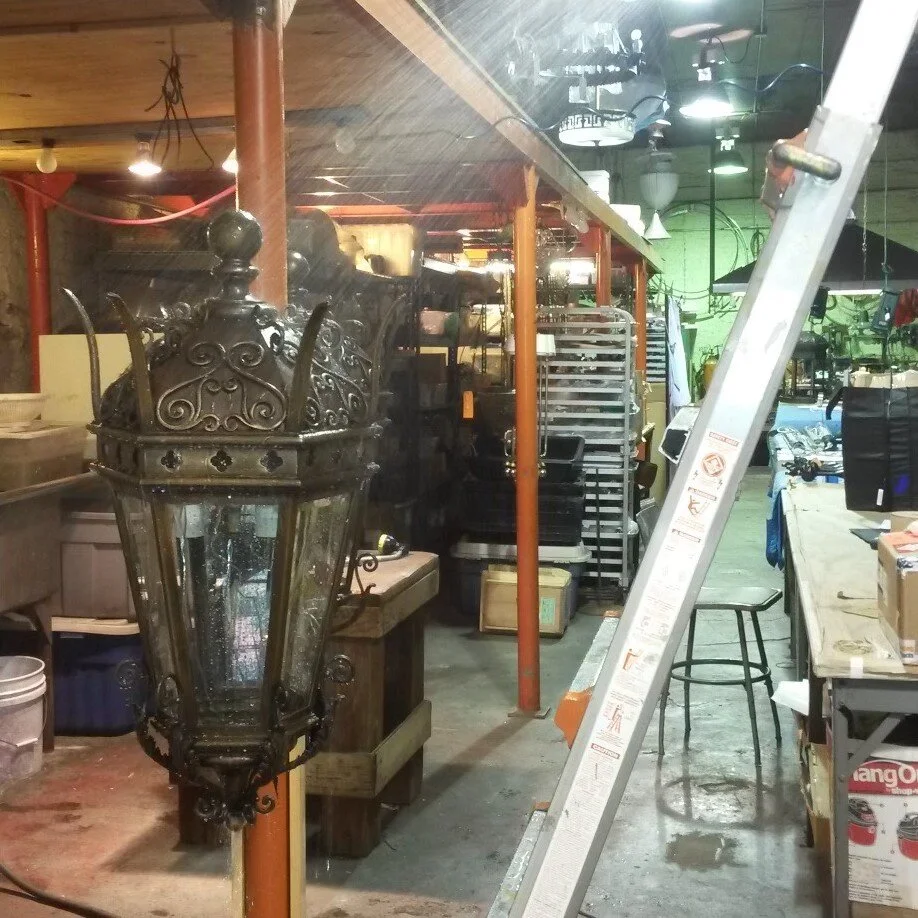Services
Aurora Lampworks specializes in fixture restoration, historic replication, and the wiring of pre-electric or previously electrified fixtures for line or low voltage. Please click through the services below to learn more.
Assessment & Consultation
As part of the assessment phase of a project, Aurora Lampworks is often asked to provide condition reports, and is involved in scope development.
The condition report describes the current state of the fixture: its finish, lamping (source of illumination), and wiring. Oftentimes it requires getting up to the ceiling to understand the means of attachment, age of wires, and any relevant code issues there might be. Condition reports can be very simple and to the point or can become very detailed. For museums and historic buildings, the condition report will become a document of record and spans the entire project including means and methods used, shop drawings, documentation of process, and accompanied by installation drawings and instructions.
Scope development is a discussion to understand what the Client would like to see done with the fixture. Is the finish to be restored or conserved? What are the cost implications?
With finishing decisions, it is generally helpful to do a mockup. A finish sample can either be done on a discreet part of the fixture or on a similar material.
Mockups may also be done to evaluate the best lamping for the fixture. In most every case, one must start with the lamping to ensure that the fixture will provide the light output desired.
On-Site Services
Electricity wasn't prevalent in the US until the beginning of the 20th century. Consequently, many older fixtures were designed for gas. For those early fixtures, the means of attachment to the wall can be quite different than those fabricated later. Many gas fixtures were simply screwed onto the gas pipes. Only small holes are needed for the gas to pass through. With the introduction of wires, existing gas holes are not only tight, but installation would require twisting the fixture onto the wall. This can stress out the wires and possibly cause a short. Aurora has developed a number of safe alternatives to adapt old gas fixtures to current standards.
Many fixtures, particularly European ones, do not meet current mounting and safety standards. It’s important to note that building codes change, and even modern fixtures may no longer be compliant. It is imperative that we understand site-specific conditions in the wall or ceiling so that we can properly adapt the fixtures for smooth, safe, and easy reinstallation. For these reasons, our scope often includes a member of Aurora's team to be on-site to assist a licensed electrician in the removal and reinstallation processes.
Restoration & Conservation
Objects change physically over time in their appearance, form, and function. They can tell stories of changes in both aesthetics and technology.
Oftentimes, the terms restoration and conservation are confused. There are distinct differences between the two and it is important to know the difference; both to satisfy the Client, and in many cases, for the object to hold its historic and monetary value.
Generally speaking, the goal of restoration is to bring the object back to original. That might mean stripping off old coatings and lacquers, refinishing, and reapplying lacquer. In a conservation project, we might keep the original finish although tarnished and imperfect. Conservation grade cleaners and wax are used, which “hydrate” the metal and protect it from further damage. It is our job to help the Client understand the original design intent and navigate any desired changes along their impact on the fixture’s value.
In our world, it is rare that a project is strictly conservation work. In most cases we are rewiring and often change the source of illumination to the latest technology.
Replication
Historically, people have been used to lower light levels. From candles to liquid fuels like oil or kerosene, and gas, the light levels that people lived by are hard to imagine today. Even with the invention of the incandescent light bulb light levels that were once sufficient are no longer up to current standards. A renovation is the optimal time to add fixtures or to replace those fixtures that may have gone missing. When there is at least (1) original fixture remaining, replication is a much simpler process. Molds can be taken from the existing fixture avoiding the need for labor intensive pattern making.
However, there may not be existing fixture. Buildings are repurposed over the decades and sadly, the original fixtures are lost. In these cases we find ourselves working from old architectural drawings and photographs, which can become an elaborate process. Depending on the level of replication desired, the means and methods of manufacturing must be considered—nothing can compare to a fixture made by hand using old world techniques. Aurora is adept at blending the old world techniques to preserve historic integrity and integrating new technologies for cost savings. It is a form of art and requires an artist eye which can only come from experience.
Retrofitting & Rewiring
Even in the realm of electric fixtures, there are many iterations. As technologies change every few decades, fixtures often follow those trajectories. It is important to be fluent in the various technologies whether they be incandescent, fluorescent, High intensity Discharge (HID), LED, line voltage or low voltage.
For historic fixtures, the common trajectory of retrofitting a lighting fixture is to electrify gas fixtures. Although gas is not a very efficient lighting source, it is hard to replicate the romantic and historic atmosphere it provides. Occasionally we have retrofitted fixtures from electric to gas, as is the case of the enormous exterior sconces at The Dakota building in New York City.
With the building's significant history and the with the advent of John Lennon's murder, it seemed very appropriate to once again have eternal flames burning.
UL Listing & Safety
Underwriters Laboratories, (UL) was founded in 1894 by William Henry Merrill to address the ever-growing electrical and fire safety issues. Its headquarters are located in Northbrook, Illinois. It has expanded into an organization with 64 testing laboratories serving customers in 104 countries and addressing a broader scope of safety issues.
Aurora Lampworks is a UL shop under 1598 Standard, which means we are able to UL List fixtures in house (mostly incandescent and fluorescent). We pay quarterly fees, host spontaneous inspections, and calibrate our testing equipment annually. We’re always in dialogue with UL Representatives who ensure that our wiring and testing procedures are compliant.
The technology is changing so quickly in the world of LEDs that there is no UL Standard for them. This means that fixtures that house integrated LEDs must be Field Evaluated, or otherwise undergo a 'Procedure Described' exercise. The options vary widely with circumstance. It often falls within our scope of work to advise on the most appropriate and cost effective way to navigate UL Listing and Safety standards.
In these days of litigation, rarely will an electrician install a fixture that does not carry the appropriate UL Label because it acts as an insurance policy. Should something go wrong in the field, the required labels for every UL Listed fixture are traceable back to the manufacturer. Consequently, we take the business of UL very seriously. We consider UL a partner in our business—friend, not foe.



























































